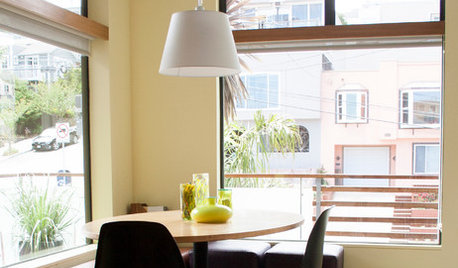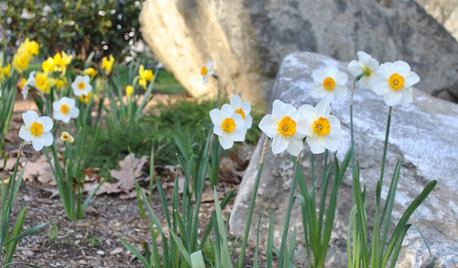blossom-end rot
kawaiineko_gardener
13 years ago
Related Stories

GARDENING AND LANDSCAPING8 Rot-Resistant Woods for Your Outdoor Projects
No need for chemical treatments on your deck or pergola. These woods stand up to weather, insects and time beautifully on their own
Full Story
COLORColor of the Week: Spring Blossom Yellow
Tired of winter yet? Bring on spring with our featured color of the week
Full Story
MY HOUZZMy Houzz: With TLC, a Former Dutch Nursery Estate Blossoms
A family buys a run-down estate in the Netherlands and brings it back to life
Full Story
DECORATING GUIDESThinking Spring: Blossoming Branches
Cherry, Peach and Apple Flowers Make Interiors Bloom
Full Story
GARDENING AND LANDSCAPINGSpring Blossoms Burst Into the Big City
Warm weather has lured busloads of gorgeous flowers to New York, from shy buds to full-blown blooms
Full Story
HOUZZ TOURSMy Houzz: High End Meets Budget Friendly in Toronto
Splurging selectively and saving elsewhere, a Canadian family gets a posh-looking home that matches their vision
Full Story
EDIBLE GARDENSWhy Grow Quince? For Beauty, Fragrance and Old-Time Flavor
Delightfully perfumed fruit and lovely spring blossoms make this apple and pear cousin worth a spot in the garden
Full Story
HOUSEPLANTSHow to Force Amaryllis Bulbs Indoors
Enjoy vibrant red blossoms even as gardens turn snowy white, by teaching this hardy repeat performer to ignore the calendar
Full Story
TILETop Tile Trends From the Coverings 2013 Show — the Wood Look
Get the beauty of wood while waving off potential splinters, rotting and long searches, thanks to eye-fooling ceramic and porcelain tiles
Full Story
FEEL-GOOD HOME21 Ways to Waste Less at Home
Whether it's herbs rotting in the fridge or clothes that never get worn, most of us waste too much. Here are ways to make a change
Full Story


carolyn137
kawaiineko_gardenerOriginal Author
Related Discussions
Nectarine blossom end rot?
Q
Zucchini - Blossom End Rot or Pollination Issue?
Q
Blossom end rot on bell peppers, please help!
Q
How to prevent blossom end rot?
Q
taz6122
carolyn137
springlift34
johnnyrazbrix
taz6122
johnnyrazbrix
suddensam
Bets
yumtomatoes
springlift34
Bets
johnnyrazbrix